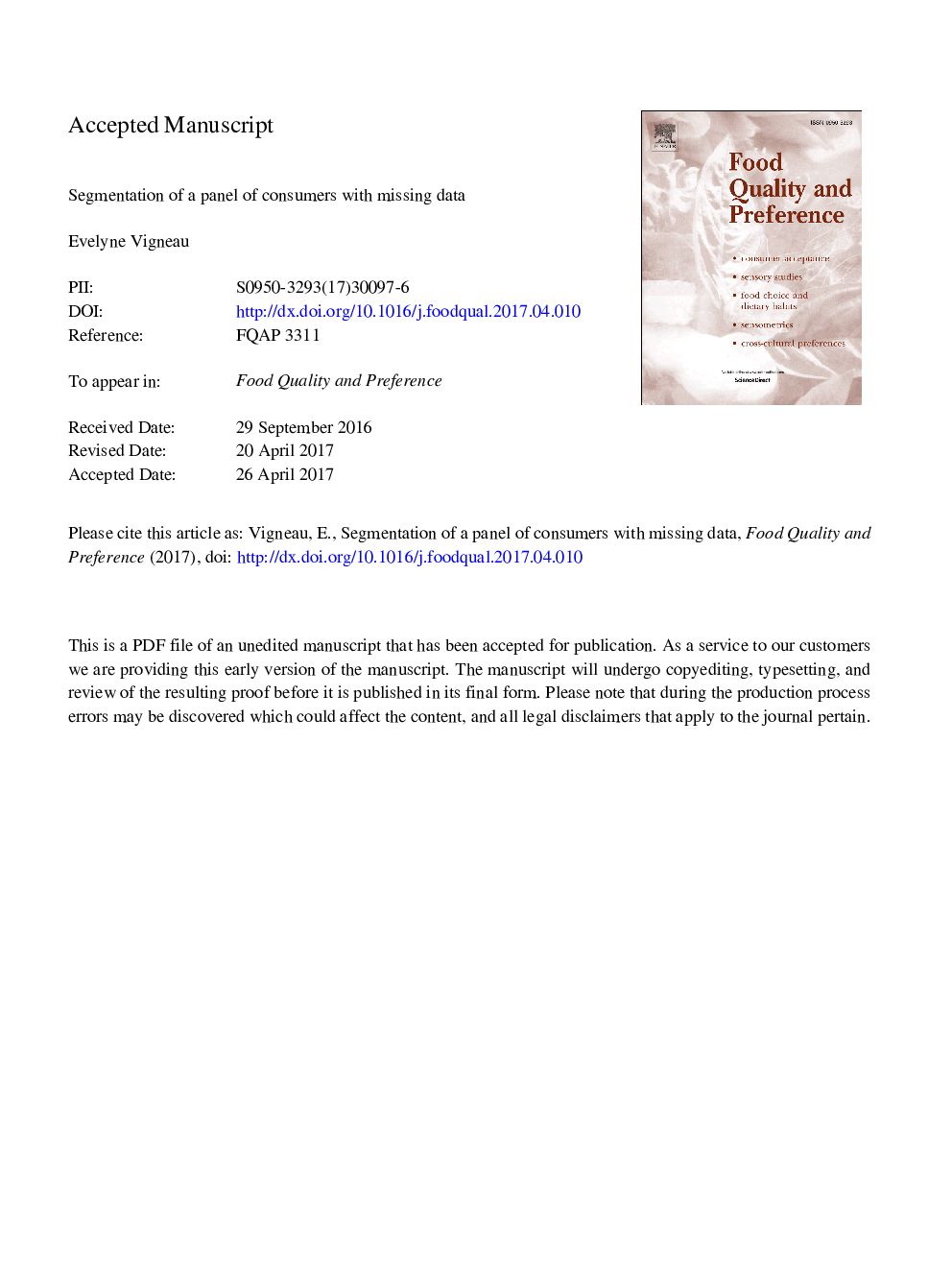| Article ID | Journal | Published Year | Pages | File Type |
|---|---|---|---|---|
| 8838493 | Food Quality and Preference | 2018 | 29 Pages |
Abstract
The Clustering around Latent Variables (CLV) method may be used to identify segments of consumers in sensory liking studies. To date, this method has been unable to deal with missing data. Thus, consumers with missing data had to be discarded or a data imputation technique had to be applied beforehand. The CLV algorithms have recently been updated in order to perform clustering and local imputations simultaneously. Firstly, a simulation study where missing data were generated randomly or according to a balanced incomplete block design was set up. It makes it possible to assess the ability of the CLV procedure to identify segments of consumers in a hedonic dataset with missing data, in comparison with those segments obtained on the basis of a complete data set. The method was also applied to the 13th Sensometrics Conference workshop data, associated with a preference experiment for which 62.5% of the liking scores was missing, according to a sensory informed incomplete block design. The results of the CLV procedure are discussed and compared to those of the Gaussian mixture model based approach previously proposed to solve this issue of simultaneous imputation and clustering. It turns out that both strategies led to two segments of consumers, somewhat different in terms of individual cluster membership but with fairly convergent averaged liking profiles regarding the most discriminant products.
Keywords
Related Topics
Life Sciences
Agricultural and Biological Sciences
Food Science
Authors
Evelyne Vigneau,
